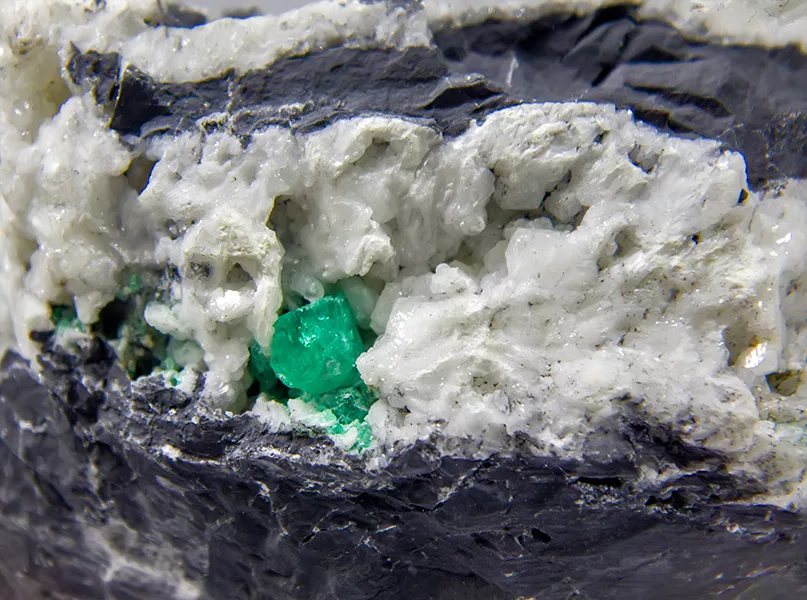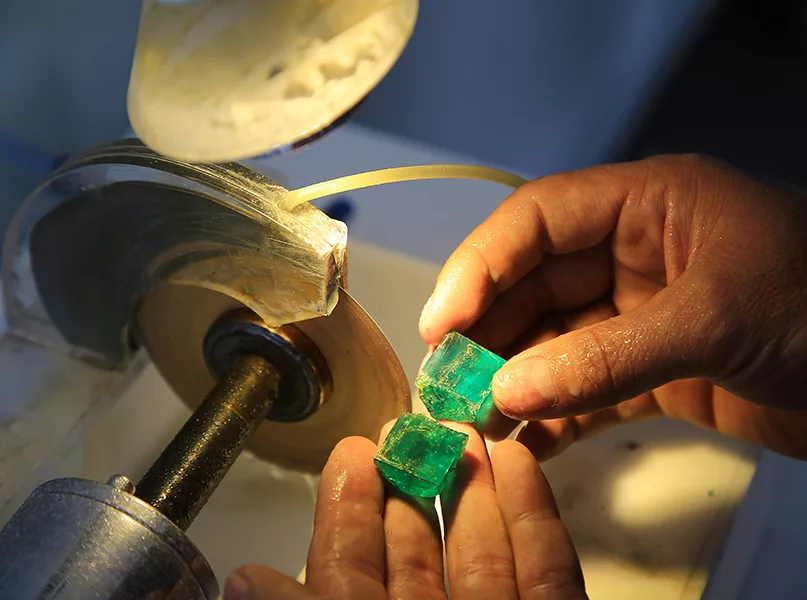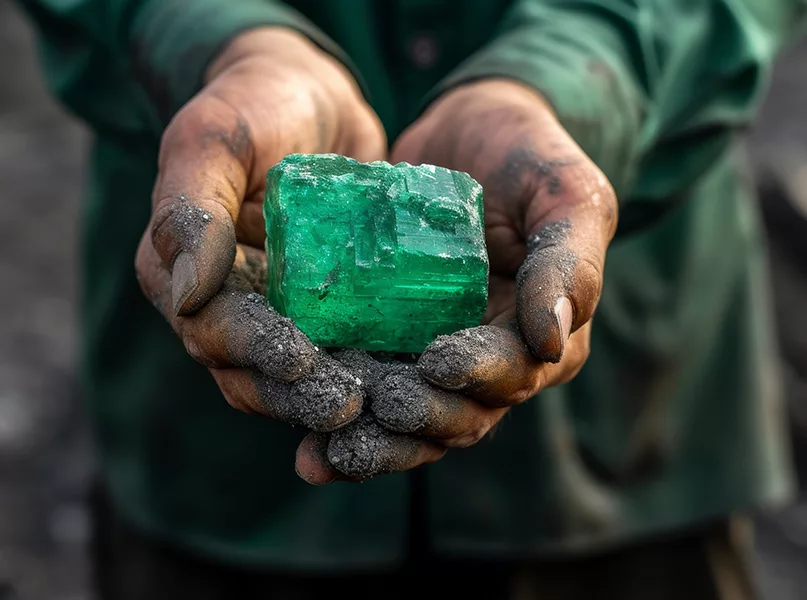Gemstones are one of the many ores recovered by mining. We cast our eye on emeralds as a delicate but valuable commodity within the industry.
INTRODUCTION
During the age of antiquity, green gems originally discovered in Egypt were thought to be emeralds, but they were possibly peridots as knowledge at the time was limited. The famous Egyptian emerald mines, otherwise known as Cleopatra’s emerald mines, were the primary source of the gemstones until deposits were located in the Americas in the 16th century. Emeralds were mined from 2000 BCE in Sikait and Zabara, about 40 square miles east of Egypt’s inhospitable desert region between the Nile and the Red Sea. The mines are now depleted, so another source was found in Austria and mined by the Romans, but they are no longer commercially viable. Luckily, there are now many operable locations around the world.
MINING MAP
Far to the west, it is Colombia that supplies around 90 percent of the world’s emeralds from three of its mines: Chivor, Muzo, and Coscuez. The other 10 percent comes from other geographically and culturally diverse places, including Zambia, the second largest supplier, with Brazil coming in as the third largest. Other destinations include Pakistan, Afghanistan, Russia, Australia, Madagascar, Zimbabwe, and the US. The techniques used to extract these exquisite emeralds have evolved over time, from strip mining in the 16th century, to either open pit or terrace mining which are commonplace today.
The vast majority of gems are found in the primary deposits of the host rock, and few are found in secondary deposits. Chivor, 75 kilometres northeast of Bogotá, is the only privately owned pit, whereas the other two mine sites are on long-term leases from the Colombian government to two companies. This includes Colombian Emerald Exports, a business established in 2011, that is involved with the extraction and trading of all three mine locations.

Elsewhere, the most recent discovery of emerald deposits took place in the Julian mining district of southern California. The first lode mining claim was filed here in 1870, just after the initial gold rush, but the emeralds that were recently unearthed here have now expanded the gemstone’s mining map even further.
FUTURE OF EMERALD MINING METHODS
Concerned with the ecology of the Muzo and Chivor mining areas, efforts are underway to shift from strip to underground mining. In 1996, Canadian company Chivor Emerald Corporation Limited started working in the mines with sophisticated computer-aided mining methods.
Today, mining and marketing company, FURA Gems, is set on introducing modern mining methods in Coscuez, as Colombian emeralds are becoming more difficult to find. The global mining company has started to use artificial intelligence (AI) rather than legacy technology in mineral exploration, mechanising its processes to a degree that is unprecedented in mining history. The scientific identification of gem deposits will minimise the carbon footprint and protect the natural environment, while also increasing productivity. As the retrieval of emeralds can prove difficult since they are embedded in rocks, sometimes among layers of mica schist, open pit mining is one way to harvest the emeralds as the surface is blasted with water to reveal viable rock.
Another method, which is used for extraction in Colombia, is terrace mining, with tunnel mining as the final process to find a vein of emerald-bearing rock. It has been known for people in Brazil to dig tunnels in their backyards and lower miners down on ropes if emeralds are rumoured to be close enough to the surface. However, blasting is not a desirable choice for mining emeralds, it requires more delicate work as the gemstones can be close to the surface and may be hidden by other minerals.
The techniques used to extract these exquisite emeralds have evolved over time, from strip mining in the 16th century, to either open pit or terrace mining, which are commonplace today.

SUCCESSFUL STONES
The extraction of emeralds was taking place long before mechanised mining. Since 1928, Zambia has been significant within the emerald industry, increasing commercial production in the 1970s. The emeralds in Zambia are less fragile due to the high iron content.
The highest price ever paid for a Zambian emerald is $1.04 million in 2021. Emeralds remain in the top four investments, along with diamonds, rubies, and sapphires, although, an emerald’s value can vary according to its hue, colour shade and saturation. In 2008, Africa-focused British mining company Gemfields claimed an open pit mine at Kagem (Zambia), with ownership split between the company and the government at 75 to 25 percent respectively. It was then turned into a profitable concern, and Gemfields found the largest emerald ever mined, having recently auctioned the Kafubu Cluster from the Kagem mine – at 187,775 carats – fetching $30.8 million in revenue and weighing 37,555 grams.
The third biggest emerald mining country, Brazil, mines emeralds in four of its states – Ceará, Bahia, Goiás, and Minas Gervais. The country produces beryl varieties in addition to emeralds, in fact, it has more tourmaline resources than anything, and any green gems, including tourmaline, discovered before the 19th century were classified as “emeralds”. Synthetic emeralds are expensive to produce, due to the cost of the equipment and the slow, energy-intensive process, meaning that lab-created emerald will not yield as much value as a mined gem.
The world’s most popular green gem, the pursuit of emeralds continues to thrive as a prosperous arm of the global mining sector.
FUN FACTS
- Elon Musk’s family owned a stake in an emerald mine in Zambia
- Bluish green to pure green is the most desirable emerald colour
- Emeralds are sought after thanks to the green colour and relative rarity
- The best gem-quality cuts come from the Muzo area of Colombia


































